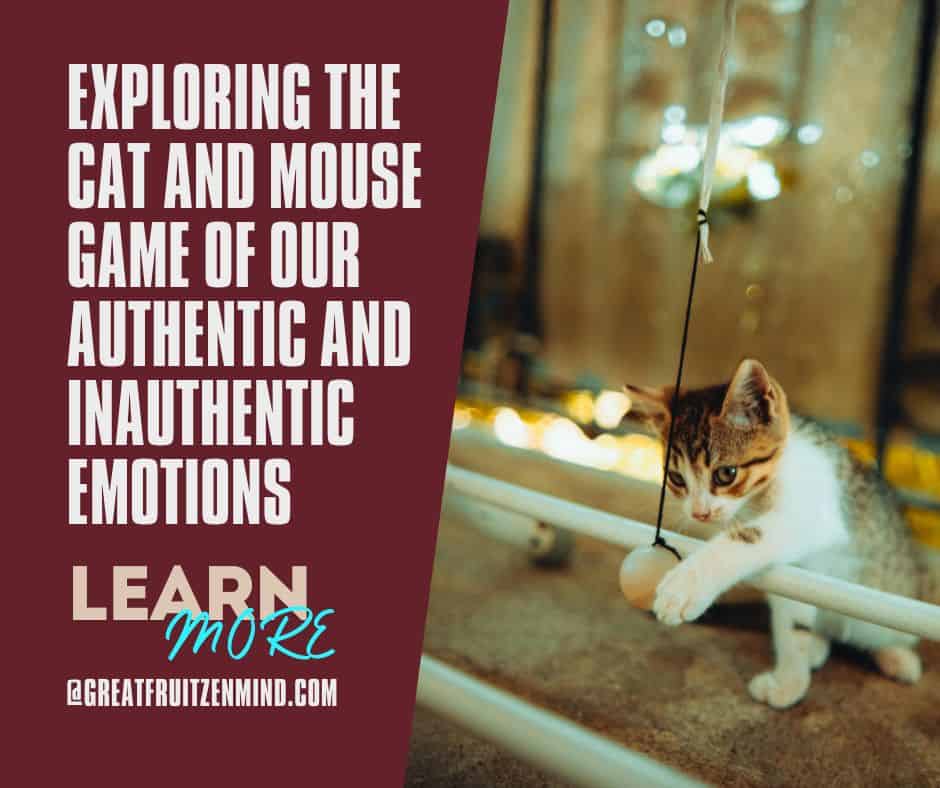Read time 4 minutes. Today we examine our authentic and inauthentic emotions. Some mental activity gives rise to inauthentic emotions, which serve to distract us and prohibit us from doing important inner work. This stand alone article is part of our letting go series.
Let’s begin to explore this idea by considering a hypothetical situation. Perhaps we have an event or a holiday coming up. We have an idea that we want it to be a perfect day, and so we develop a strong image of me having a perfect day in our minds. If problems arise and the day does not go in just the way we had planned, a disconnect may arise. Our strong vision of how we wanted the day to go encourages us to continue to tell people it is a great day, and we are enjoying ourselves. However, underneath all of that lies a disappointment that can only be discovered with an honest and concerted investigation.
That disappointment is the authentic feeling. The surface happiness? That’s inauthentic—not because you’re lying, but because it’s tied to the idealized version of the day, not the one that actually happened.
Inauthentic emotion always tracks back to the imagined version of events. Authentic emotion lives in what actually occurred.
Simple? Maybe. But the tangle runs deeper.
How rationality covers over truth
Now think of a child. A toy is taken. A tantrum erupts. To an adult, it seems excessive. But the child’s reaction is honest. Raw. Undiluted.
We feel the same sting when something is taken from us. We’ve just learned not to scream about it. Over time, we’ve developed rational systems that override our authentic responses. We edit what we show. We talk ourselves into balance.
But underneath that self-talk, the original reaction is still alive. It hasn’t been dissolved—it’s just been suppressed.
That suppression is inauthentic emotion. And it almost always traces back to ego.
The ego wants to appear stable. It tries to mimic Tao by acting unfazed. It creates a mental narrative that says, This doesn’t bother me. I’m above it. But the body knows better. And the split begins.
Inauthentic emotion is inauthentic spiritual practice
Let’s consider some of the ramifications of all of this. Inauthentic emotion can mislead us into thinking that we are doing beneficial inner work. In actuality, it causes us to avoid it. For example, we might find ourselves annoyed with someone. “I shouldn’t feel this way about this person, but I can’t help it. Is that bad?”
That thought feels mature. Spiritual, even. But we can see both the authentic and inauthentic emotional responses at work. We recognize our authentic feelings about the person. At the same time, we try to push those feelings aside with an inauthentic ideal of how we think we should feel.
That might help us behave better in the moment, but nothing inside us has changed. We’ll face the same tension the next time it comes up.
Real transformation doesn’t come from surface calm. It comes from seeing clearly.
Presence, practice, and real inner work
Here’s the thing: even without practice, emotion will fade eventually. Humiliation turns to numbness. Rage turns to exhaustion.
But without inner work, those emotions will return. The next humiliation will sting just as much. The next trigger will hit just as hard.
With practice, something different happens. Humiliation becomes humility. Anger becomes clarity. Not just once—but also going forward. That’s transformation.
Authentic and inauthentic emotions aren’t just concepts. They’re signposts. They show us where our work is. The moment we stop performing and start observing—gently, without commentary—real change begins.
This is the first real step. In the next lesson, we’ll explore what comes after
Explore more:
All of this is a very psychological and analytical take on this subject. In this article on Tiny Buddha, Tim McAuley offers a more personal take on dealing with inauthenticity that may speak more directly to some people. The article also concludes with some of his tips for reconnecting with the authentic self.
Pick a lane (or meander):
- 🍉 About Us: Watermelon Soup For The Soul →
- ⚓️ Go Deeper: The Undercurrent Signup →
- 🛍️ Shop Around: Visit the GZM Store →
- 🦋 Do Nothing, See What Happens: Mini Practice→
- 🌀 Linger: Go to Homepage →
- 🔁 Follow Along:
🌀 From the GZM Archives – Polished, Preserved, Still Relevant.


Leave a Reply